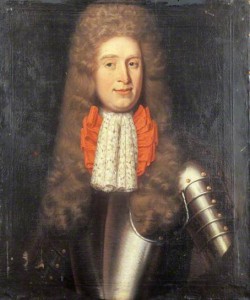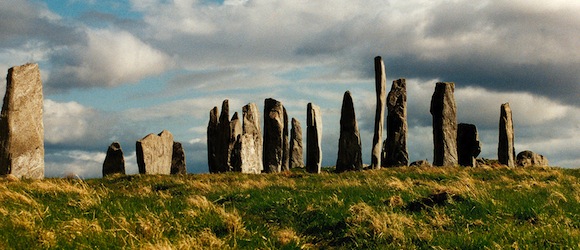Giacobita è una parola sconosciuta ai più – che non siano di origini scozzesi (o Irlandesi o Inglesi) o accaniti lettori dei romanzi di Sir Walter Scott! Non è nemmeno un errore di battuta perchè i giacobiti furono i seguaci della casa scozzese degli Stuart (Stewart , Stuard) che sostennero il ritorno sul trono del ramo maschile della dinastia dopo la deposizione di re Giacomo II d’Inghilterra (nonchè Giacomo VII di Scozia).
Voi giacobiti!
La questione giacobita antefatto
Il Re deposto
La questione giacobita Atto I
LA BATTAGLIA DI SHERIFFMUIR 1715
La questione giacobita Atto II
LA BATTAGLIA DI CULLODEN 1746
I giacobiti nel romanzo storico
La scheda storica dei protagonisti
Canti giacobiti
THE “GLORIOUS” REVOLUTION (1688)
THE ACT OF UNION
(1715)
(1745)
Le rivolte giacobite che imperversarono dal 1688 al 1746,non furono solo una lotta per la successione al trono e nemmeno una questione religiosa. In essa confluirono le speranze di indipendenza di due paesi Irlanda e Scozia, che rivendicavano la loro autonomia, ma erano anche i colpi di coda del sistema di vita feudale dei clan scozzesi, diventato anacronistico secondo i tempi “moderni”.
L’unione delle Corone fu simboleggiato dopo il 1603 nello stemma personale di re Giacomo I, che mostra la rosa Tudor combinata con il cardo scozzese

Jacobite by name!
JACOBITE QUESTION: BACKSTORY
The overthrown King
JACOBITE REBELLION: FIRST ACT
THE BATTLE OF SHERIFFMUIR 1715
JACOBITE REBELLION: SECOND ACT
THE BATTLE OF CULLODEN 1746
Jacobites in the historical novels
JACOBITE SONGS
THE “GLORIOUS” REVOLUTION (1688)
THE ACT OF UNION
(1715)
(1745)
[English translation]
Jacobite is a word unknown to most people – who are not of Scots origin (or Irish or English) or avid readers of Sir Walter Scott’s novels (or Outlander Serie fans)!
The Jacobites were the followers of the Stuart Scottish house (Stewart, Stuard) who supported the return of the male branch of the dynasty on the throne after the deposition of King James II of England (as well as James VII of Scotland).
The Jacobite uprisings that raged from 1688 to 1746 were not just a struggle for succession to the throne nor a religious issue. In it the hopes of independence of two countries Ireland and Scotland converged, which claimed their autonomy, but they were also the last blinks of the feudal system of life of the Scottish clans, no longer in step with the times.

La questione giacobita antefatto
Le rivolte iniziarono con la deposizione al trono di Re Giacomo II in favore della figlia protestante Maria II che regnò sui Tre Regni (Inghilterra, Irlanda, Scozia) affiancata dal marito Guglielmo III d’Orange.
Quando re Giacomo II divenne re nel 1685, la sua politica “assolutistica” e le sua intenzioni di restaurare il cattolicesimo, lo rese inviso ai più e in particolare ai capi dei due partiti del parlamento -Whigs e Tories – che d’intesa per disfarsi al più presto del re papista (il quale voleva portare l’Inghilterra verso “il papismo e la schiavitù”), chiamarono il principe Guglielmo III d’Orange dall’Olanda affinchè si recasse a occupare il trono reale con la moglie Maria Suart. Un colpo di stato camuffato da un “cambio in famiglia” con tanto di esercito di mercenari ingaggiati da Guglielmo!a figlia protestante Maria II che regnò sui Tre Regni (Inghilterra, Irlanda, Scozia) affiancata dal marito Guglielmo III d’Orange.
Il Re deposto
Qui siamo agli inizi della ribellione, passata alla storia come Gloriosa Rivoluzione, il re venne dichiarato decaduto sia dal parlamento inglese che sa quello scozzese e nel 1689 “rimpiazzato” di fatto da Guglielmo III. Giacomo II cercò di riprendersi il trono sbarcando nell’Irlanda cattolica con un esercito francese e la speranza (rivelatasi ben presto vana) di raggiungere Londra a capo dei suoi sostenitori.
Nel frattempo John Graham di Claverhouse, visconte di Dundee (1648–1689), noto nell’Ottocento come “Bonnie Dundee” (vedi ) si era rifiutato di giurare fedeltà a Guglielmo anzi aveva complottato con altri “giacobiti” ovvero sostenitori di Giacomo in favore della ribellione armata: corse in lungo e in largo per le Highlands allo scopo di radunare un piccolo esercito. Lo scontro avvenne in data 27 luglio 1689 contro le truppe guidate dal generale Huge Mackay in un attacco a sorpresa al passo di Killiecrankie. Dundee vinse la battaglia ma cadde ferito a morte e divenne subito un eroe della ribellione giacobita.
La Gloriosa Rivoluzione del 1689 fallì miseramente, e di fatto fece dell’Inghilterra una monarchia parlamentare.
La questione giacobita Atto I
La discendenza maschile del ramo Stuart (la parte cattolica della famiglia) cercò periodicamente e fino al 1746 di riprendersi il trono con l’aiuto di Francia e Spagna: Giacomo Francesco Edoardo Stuart (il Vecchio Pretendente) tentò di riprendersi il trono per due volte nel 1708 e nel 1715.
Alla morte della regina Anna (1 agosto 1714) senza eredi diretti, il risentimento scozzese per l’unione del Regno di Scozia con l’Inghilterra era vivo più che mai. Molti nobili erano giacobiti, gli Highlanders cattolici e giacobiti odiavano gli scozzesi delle Lowlands presbiteriani e i Campbells di Argyll, la grande famiglia dei Whigs. L’anno prima John Erskine ovvero Lord Mar fu eletto Ministro di Stato britannico dal partito dei Conservatori (i Tory) così quando al trono salì re Giorgio, sebbene avesse giurato lealtà al sovrano, venne privato della sua carica. Non che tutti i Tories fossero giacobiti, ma erano in odore di giacobitismo, quel tanto che bastava per impedir loro di diventare degli amministratori politici sotto gli Hannover. C’è un immagine molto calzante citata da A. I. Morton (in Storia del popolo inglese, Roma,1973):” Il Giacobitismo era politicamente morto in Inghilterra dopo il 1715, ma ne rimase a lungo lo scheletro nell’armadio dei Tories“. Incontratosi con un gruppo di Highlanders il 6 settembre 1715, Lord Mar innalzò lo stendardo Stuart presso Braemar, e nominò ufficialmente il Principe Giacomo Edoardo re di Scozia, Inghilterra e Francia con il nome di Giacomo VIII di Scozia (e Giacomo III d’Inghilterra e d’Irlanda). Con questa chiamata alle armi iniziò l’insurrezione giacobita che si concretizzò con la mobilitazione dei clan delle Highlands.
Anche questo secondo tentativo fallì e Giacomo passò il resto della sua vita dorata in esilio prima in Francia e poi dal 1717 in Italia.
JACOBITE QUESTION: BACKSTORY
The revolts began with the deposition to the throne of King James II in favor of the Protestant daughter Mary II who reigned over the Three Kingdoms (England, Ireland, Scotland) flanked by her husband William III of Orange.
When King James II became king in 1685, his “absolutist” policy and his intentions to restore Catholicism made him unpopular to the majority and in particular to the leaders of the two parties of the parliament –Whigs and Tories – who agreed to detroned their papist king (who wanted to take England to “papism and slavery“), calling Prince William III of Orange from Holland to go to occupy the royal throne with his wife Maria Suart. A putsh disguised as a “change in family” complete with an army of mercenaries hired by William!
The overthrown King
Here we are at the beginning of the rebellion, passed to history as the Glorious Revolution, the king was declared decayed by both the English parliament that knows the Scottish one and in 1689 “replaced” in fact by William III. James II tried to recover his throne by landing in Catholic Ireland with a French army and hope (oh but vain) to reach London at the head of his supporters.
Meanwhile John Graham of Claverhouse, viscount of Dundee (1648-1689), known in the nineteenth century as “Bonnie Dundee” had refused to swear loyalty to William but had already plotted with other “Jacobites” or supporters of James in favor of the armed rebellion: ran far and wide to the Highlands for the purpose of gathering a small army. The clash took place on 27 July 1689 against the troops led by General Huge Mackay in a surprise attack at the Killiecrankie pass. Dundee won the battle but fell wounded to death and immediately became a hero of the Jacobite rebellion.
The Glorious Revolution of 1689 failed miserably, and in fact made England a parliamentary monarchy.
JACOBITE REBELLION: FIRST ACT
The male ancestry of the Stuart branch (the Catholic part of the family) periodically sought and until 1746 to recover the throne with the help of France and Spain: James Francis Edward Stuart (the Old Pretender) tried to regain his throne twice in 1708 and in 1715 .
On the death of Queen Anne (1 August 1714) without direct heirs, the Scottish resentment over the union of the Kingdom of Scotland with England was alive more than ever. Many nobles were Jacobites, the Catholic and Jacobite Highlands hated the Scots of the Presbyterian Lowlands and the Campbells of Argyll, the great Whigs family. The year before John Erskine (Lord Mar) was elected British Minister of State by the Conservative party (i Tory) so when King George came to the throne, although he had sworn loyalty to the sovereign, he was deprived of his office. Not that all the Tories were Jacobites, but they were in the odor of Jacobitism, just enough to keep them from becoming political administrators under the Hanover. There is a very fitting image quoted by A. I. Morton (in History of the English People, Rome, 1973): “Jacobinism was politically dead in England after 1715, but its skeleton remained in the Tories wardrobe for a long time“. Meeting with a group of Highlanders on 6 September 1715, Lord Mar raised the Stuart banner at Braemar, and officially appointed Prince James Edward King of Scotland, England and France with the name of James VIII of Scotland (and James III of England and Ireland). With this call to arms, the Jacobite insurrection began which resulted in the mobilization of the Highland clans.
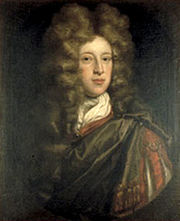
Also this second attempt failed and James spent the rest of his golden life in exile first in France and then in Italy from 1717.
LA BATTAGLIA DI SHERIFFMUIR 1715
Le rivendicazioni al trono si infransero nella Battaglia di Sheriffmuir del 13 novembre 1715, che si concluse in sostanza con un nulla di fatto (a parte tanti morti). (vedi)
Al cadere dell’oscurità entrambi gli eserciti tornarono ai rispettivi accampamenti, e il giorno seguente gli Highlanders si ritirarono verso Perth e i governativi, comandati dal Duca di Argyle, tornarono a Stirling.
Giacomo arrivato a bordo di una nave francese in dicembre, trovò la sua causa disperata e fuggì in Francia: l’esercito di Mar si disperse e la rivolta finì. Nel 1717 venne concesso, con l'”Act of Grace” un generale perdono a tutti gli Highlanders che parteciparono all’insurrezione.
Fu il figlio Carlo Edoardo Stuart principe di Galles (il Bonny Prince Charlie di tanti canti giacobiti) detto anche il “Giovane Pretendente” a scrivere l’ultimo atto di quella che venne definita dagli storici “la questione giacobita”: un damerino con l’accento italiano e la passione del brandy che tuttavia esercitò un fascino irresistibile sugli scozzesi delle Highlands! (continua)
THE BATTLE OF SHERIFFMUIR 1715
The claims to the throne broke at the Battle of Sheriffmuir of November 13, 1715, which ended essentially with a stalemate (apart from so many deaths). (see)
At the fall of darkness both armies returned to their respective camps, and the following day the Highlanders retreated to Perth and the government forces commanded by the Duke of Argyle, returned to Stirling. “The Old Pretender” arrived on board a French ship in December, founding his cause desperate he fled to France: Mar’s army dispersed and the revolt ended. In 1717 a general pardon was granted under the “Act of Grace” to all the Highlanders who participated in the insurrection.
It was the son Charles Edward Stuart prince of Wales (the Bonny Prince Charlie of many Jacobite chants) also called The Young Pretender to write the last act of what was defined by historians “the Jacobite question”: a dandy with Italian accent and the passion of the brandy but what a charm exercised on the Scots of the Highlands! (see more)
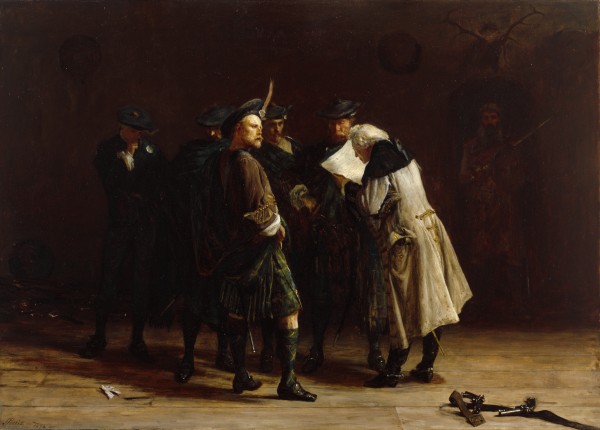
(gruppo di giacobiti scozzesi riuniti per la rivolta del 1745)
La questione giacobita Atto II
Nel 1745 quando Bonnie Charlie sbarcò nelle isole Ebridi, sul trono sedeva re Giorgio II della casa tedesca degli Hannover in virtù di una legge che faceva passare il trono d’Inghilterra solo ai discendenti protestanti più prossimi nella linea di sangue. In breve tempo Charlie riuscì ad occupare Edimburgo e a liberare quasi tutta la Scozia dalle truppe inglesi, arrivando a nominarsi re con il nome di Giacomo VIII di Scozia (il titolo che sarebbe spettato al padre); forte dei suoi successi invase l’Inghilterra, ma si trovò ben presto in difficoltà e ripiegò in Scozia lasciando a morte certa il presidio di Carlisle e i suoi 400 uomini.
Circolò in quel periodo la canzone “Ye Jacobites by name” una canzone anti-giacobita di rimprovero verso gli insorti (della serie non tutti gli scozzesi erano giacobiti).
LA BATTAGLIA DI CULLODEN 1746
Da Londra l’esercito giacobita ripiegò nelle Highlands e si stanziò a Inverness per svernare, finchè all’arrivo della primavera l’armata del Duca di Cumberland (Guglielmo Augusto di Hannover figlio del re) sferrò l’attacco presso la piana paludosa di Culloden. Per una ripetuta serie di errori tattici dei loro comandanti i soldati dei ribelli si trovarono demoralizzati, affamati e stanchi ad affrontare l’attacco dei governativi (all’alba del 16 aprile), altri errori e rivalità si aggiunsero nella conduzione della battaglia, che durò solo un ora.
I soldati inglesi obbedendo agli ordini del Duca di Cumberland uccisero sul campo tutti gli scozzesi feriti, i prigionieri di più alto rango furono portati subito a Inverness per essere processati come traditori e impiccati; molti prigionieri morirono in carcere in attesa del processo e secondo una giustizia sommaria, una buona parte dei sopravvissuti venne deportata nelle colonie, altri furono mandati in esilio e altri ancora liberati.
Bonnie Prince Charlie riuscì a fuggire e a restare nascosto per parecchi mesi protetto dai suoi fedelissimi, nonostante i pattugliamenti inglesi e la taglia sulla sua testa. Charles trovò nelle isole Ebridi molti nascondigli e sostegno ma era un pericoloso gioco a rimpiattino… (continua)
Ma la repressione contro giacobiti e simpatizzanti era volta a sottomettere totalmente il Nord della Scozia, vennero promulgate una serie di Leggi (Act of Proscription), che comprendevano il divieto di indossare il kilt, di portare armi e suonare la cornamusa, fino ad arrivare ad intaccare i rapporti di fedeltà tra i clan e il loro capo. [le antiche consuetudini rendevano in pratica indissolubile il legame di un highlander verso il proprio Lord tramite il rito del giuramento: il capoclan, aveva il possesso di tutte le terre sulle quali vivevano i membri del suo clan; questi, in cambio del diritto di coltivarle, erano tenuti a seguirlo in guerra. Truppe governative si stanziarono nelle Highlands e costruirono Fort George a pochi kilometri da Inverness, la più grande fortificazione di artiglieria leggera d’Europa.]
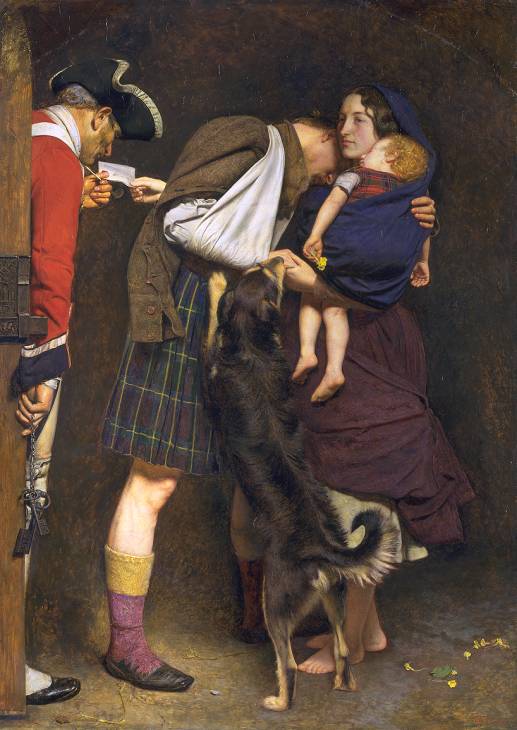
Sir John Everett Millais -1852
Charles morì a Roma nel 1788, e da allora i giacobiti furono bollati come reazionari nostalgici, ma resuscitati dal Romanticismo letterario (con Sir Walter Scott in testa) che mantenne vive le aspirazioni giacobite, specialmente in Scozia, periodo che vide un rifiorire di canti che si tramandavano di generazione in generazione, infiammando gli animi. Si può affermare che solo con la prima guerra mondiale il giacobitismo sia stato definitivamente sepolto.
JACOBITE REBELLION: SECOND ACT
In 1745 when Bonnie Charlie landed in the Hebrides, on the throne sat king George II of the German house of Hanover because the law passed the throne of England only to the nearest Protestant descendants in the bloodline. In a short time Charlie managed to occupy Edinburgh and free almost all of Scotland from the British troops, coming to name himself king by the name of James VIII of Scotland (the title that would be due to his father); but soon he found himself in difficulty and went back in Scotland, leaving helpless the garrison of Carlisle with his 400 men.
At that time the song ” “Ye Jacobites by name” ” rebuke against the insurgents (not all Scots were Jacobites).
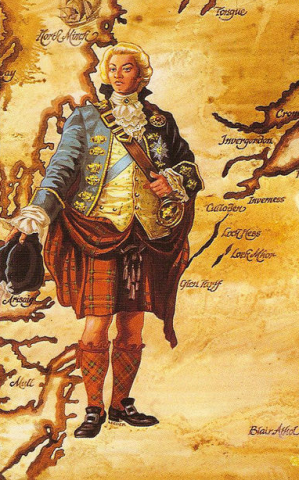
THE BATTLE OF CULLODEN 1746
From London the Jacobite army refolded to the Highlands and settled in Inverness for wintering, with the arrival of spring the army of the Duke of Cumberland (William Augustus of Hanover son of the king) launched the attack on the marshy plain of Culloden. For a repeated series of tactical errors of their commanders the rebel soldiers found themselves demoralized, hungry and tired to face the attack of the government (at dawn on April 16th), other errors and rivalries were added in the conduct of the battle, which lasted just an hour.
The British soldiers, obeying the orders of the Duke of Cumberland, killed all the wounded Scots in the field, the prisoners of highest rank were immediately taken to Inverness to be tried as traitors and hanged; many prisoners died in prison awaiting trial and according to a summary justice, a good part of the survivors were deported to the colonies, others were sent into exile and others still freed.
Bonnie Prince Charlie managed to escape and to remain hidden for several months protected by his faithful, despite the British patrols and the reward on his head. Charles found many hiding places and support in the Hebrides, but it was a dangerous hide-and-seek game … (it continues)
The repression against Jacobites and sympathizers was aimed at completely subduing the North of Scotland, and a series of Laws (Act of Proscription) were enacted, including the prohibition of wearing kilts, carrying weapons and playing bagpipes, until to undermine loyalty relationships between the clans and their leader.
[The ancient customs practically made indissoluble the link of a highlander to his Lord through the rite of the oath: the chieftain had the possession of all the lands on which the members of his clan lived; these, in exchange for the right to cultivate them, were required to follow him in the war.].
Government troops settled in the Highlands and built Fort George just a few miles from Inverness, Europe’s largest light artillery fortification.
Charles died in Rome in 1788, and since then the Jacobites were branded as nostalgic reactionaries, but they resurrected from the literary Romanticism (with Sir Walter Scott at the head) that kept the Jacobite aspirations alive, especially in Scotland, a period that saw a flourish of songs, handed down from generation to generation, inflaming the minds. It can be said that only with the First World War was Jacobism definitively buried.
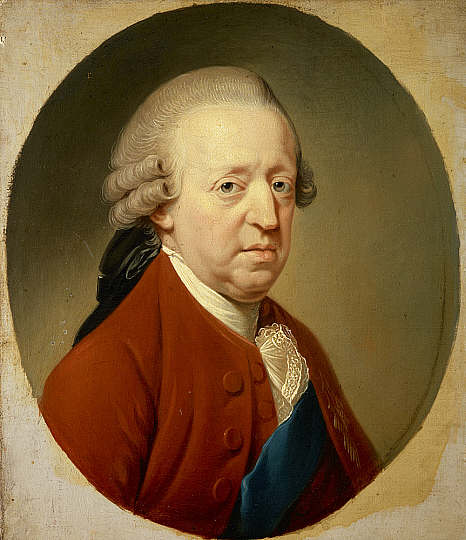
JACOBITE SONGS
THE “GLORIOUS” REVOLUTION (1688)
- BONNIE DUNDEE
- BRAES OF KILLIECRANCKIE
- It was a’ for Our Rightful King (Robert Burns)
- The Haughs of Cromdale
- Oh ono chrio (SMM)
THE ACT OF UNION
- BOTH SIDES THE TWEED
- SUCH A PARCEL OF ROGUES IN A NATION (A Parcel of Rogues)

the Young Chevalier
Bonnie Prince Charlie
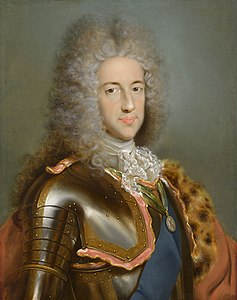
(1715)
- BROOM OF COWDENKNOWES
- CAM YE OVER FRAE FRANCE
- COCK UP YOUR BEAVER
- JAMIE, COME TRY ME
- LILLIBURLERO
- SHERIFFMUIR (Robert Burns)
- THERE’LL NEVER BE PEACE (Robert Burns)
- WILL YE GO TO SHERIFFMUIR (Robert Tannahill/ Hogg)
(1745)
- BANNOCKS O’ BEAR MEAL
- Blue Bonnets Are Over the Border
- BONNY MOORHEN
- BRAVE LEWIE ROY
- CHARLIE, HE’S MY DARLING
- CULLODEN’S HARVEST
- FHÌDEAG AIRGID
- FLORA MACDONALD’S REEL
- FOR THE SAKE OF SOMEBODY
- HIGHLAND LADDIE (I Hae Been At Crookieden/Bonnie Heilan’ laddie)
- HIGHLAND WIDOW’S LAMENT
- JOHNNIE COPE
- Lassie lie near me (James Hogg)
- LOCHABER NO MORE
- LOCH LOMOND
- Loud Blaw The Frosty Breezes/The young Highland Rover (Robert Burns)
- (THE) LOVELY LASS O’ INVERNESS (Robert Burns)
- MO GHILE MEAR
- ORAN EILE DON PHRIONNSA (MOCH SA MHADAINN)
- Over The Water To Charlie
- SKYE BOAT SONG
- THA MO LEABAIDH ‘SAN FHRAOCH
- TRANENT MUIR
- TWA BONNIE MAIDENS
- WILL YE NO’ COME BACK AGAIN
- WHA’LL BE KING BUT CHERLIE?
- WHITE (BLUE) COCKADE
- YE JACOBITES BY NAME
Jacobites in the historical novels
[I giacobiti nel romanzo storico]
Per immergersi nella storia senza le distorsioni romantiche di Sir Walter Scott consiglio di leggere i primi tre libri della serie Outlander di Diana Gabaldon.
L’avvio della storia è apparentemente un po’ “sopra le righe”, con un viaggio nel tempo della protagonista che, in viaggio di nozze ad Inverness, si ritrova proiettata nel passato, dopo aver attraversato il cerchio di pietra di Craigh na Dun: dal 1945 nel 1743.
In realtà il cerchio di pietre descritto dalla Gabaldon nelle vicinanze di Inverness è di pura fantasia, ma nelle vicinanze si trova il Clava Cairns un “cimitero” con cerchi di pietre risalenti all’età del bronzo (e in effetti in Scozia dove ti giri trovi un cromelech o un cairn)
To immerse yourself in history without the romantic distortions of Sir Walter Scott I recommend reading the first three books of Diana Gabaldon’s Outlander serie.
The start of the story is apparently a little “over the top”, with a journey through time of the female protagonist who, during her honeymoon in Inverness, finds herself projected into the past, after crossing the stone circle of Craigh na Dun: from 1945 in 1743.
In fact, the circle of stones described by the Gabaldon in the vicinity of Inverness is pure fantasy, but nearby is the Clava Cairns a “cemetery” with stone circles dating back to the Bronze Age (and in fact in Scotland where you turn you find a cromelech or a cairn)
Tuttavia la vicenda storica è calata nella Scozia della metà del 700 dilaniata dalle lotte giacobite e dai conflitti tra i clan, accuratamente ricreata dalla Gabaldon, attraverso le tradizioni e la vita del popolo scozzese, in uno stile ricco ed evocativo, mai lento o noioso: così nel libro Il Ritorno (che però si può leggere solo dopo aver letto i primi due) facciamo la conoscenza di Charles Stuart, veniamo catapultati in mezzo alla battaglia di Prestonpans e soccombiamo anche noi nella disfatta di Culloden.
Il romanzo è anche una storia romantica dell’amore nato tra Claire Randall e James Fraser ovvero James Alexander Malcolm MacKenzie Fraser Lord di Broch Tuarach e le loro peripezie per l’Europa e le Americhe.
However, the romance is settled in Scotland in the mid-700 torn by the Jacobite struggles and clan conflicts, carefully recreated by Gabaldon, through the traditions and life of the Scottish people, in a rich and evocative style, never slow or boring: so in the book The Return (which can only be read after reading the first two) we get to know Charles Stuart, we are catapulted into the battle of Prestonpans and we too succumb in the defeat of Culloden.
The novel is also a romantic story of the love born between Claire Randall and James Fraser or James Alexander Malcolm MacKenzie Fraser Lord of Broch Tuarach and their vicissitudes for Europe and the Americas.
ROMANZI STORICI (historical novels)
Scritti da Sir Walter Scott: Vecchia mortalità (ambientato in Scozia dal 1679 al 1689), Il Nano Nero (il Border scozzese dopo il 1707) Rob Roy (rivolta giacobita del 1715), Waverley (sulle vicende del 1745 e la battaglia di Culloden), Redgauntlet (ambientato nel Border durante il 1765)
Scritti da Diana Gabaldon: The Outlander Series. I 7 volumi dell’originale in inglese sono stati pubblicati in Italia, tranne che il primo volume, in due puntate.
Written by Sir Walter Scott: Old mortality (set in Scotland from 1679 to 1689), The Black Dwarf (the Scottish Border after 1707) Rob Roy (Jacobite revolt of 1715), Waverley (on the events of 1745 and the Battle of Culloden) , Redgauntlet (set in the Border during 1765)
Written by Diana Gabaldon: The Outlander Series. The 7 volumes of the original in English have been published in Italy, except the first volume, in two episodes.
1. Outlander (La Straniera)
2. Dragonfly in Amber (L’Amuleto d’ambra – Il Ritorno)
3. Voyager (Il Cerchio di pietre – La Collina delle fate)
4. The Drums of Autumn (Tamburi d’autunno – Passione oltre il tempo)
5. The Fiery Cross (La Croce di fuoco – Vessilli di Guerra)
6. A Breath of Snow and Ashes (Nevi Infuocate – Cannoni per la libertà)
7. An Echo in the Bone (Destini incrociati – Il prezzo della vittoria)
8. Written in My Own Heart’s Blood, 2014 (Legami di sangue – Prigioniero di nessuno)
LA SAGA OUTLANDER Per chi ama i romanzi storici romance Diana Gabaldon con la sua serie Outlander è ormai diventata un punto di riferimento. Il suo successo è ormai planetario e in Italia e non solo non si contano più i siti e i forum dedicati a questa autrice e ai meravigliosi personaggi da lei creati. La serie Outlander, ancora in corso di pubblicazione, è composta da 7 libri continua
Il primo Blog dedicato ai romanzi della serie Outlander di Diana Gabaldon.
Il tour Outlander per visitare la Scozia in modo alternativo
Un poderoso lavoro di ricerca sui testi e le implicazioni storiche, (fonti, melodie, partiture, traduzioni) molto ben documentato è quello di Christian Souchon (che potete leggere in inglese, francese, tedesco e bretone) partendo da qui selezionate la lingua e andate alle JACOBITE SONGS
A powerful research work on texts and historical implications (sources, melodies, scores, translations) very well documented is that of Christian Souchon (which you can read in English, French, German and Breton) starting from here select the language and go at JACOBITE SONGS
An ethno-musicological works by Christian Souchon: Chants Jacobites d’Ecosse et d’ailleurs, Books I to V
Presented in five volumes and translated into French by Christian Souchon, the reader is invited to explore the poetic and lyrical universe which arose around this desperate but inspiring cause. The French translations have maintained the musical rhythm of the original pieces with the author endeavouring to convey, beyond the word-by-word meaning, the emotional content of songs which embody Scotland’s eternal desire to triumph over adversity and assert her originality and national consciousness.
L’eredità giacobita (The Jacobite inheritance): http://jacobite.ca/

